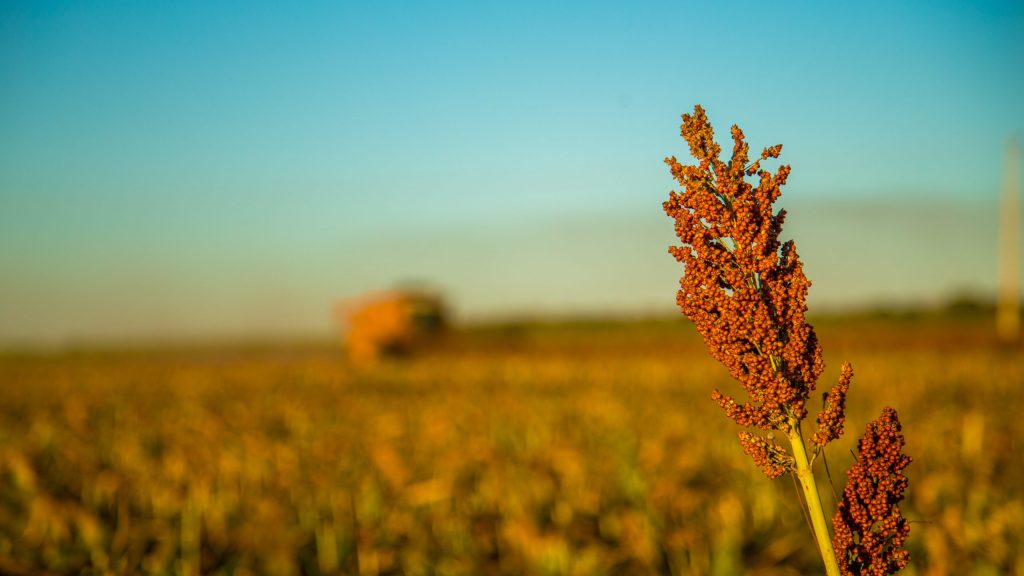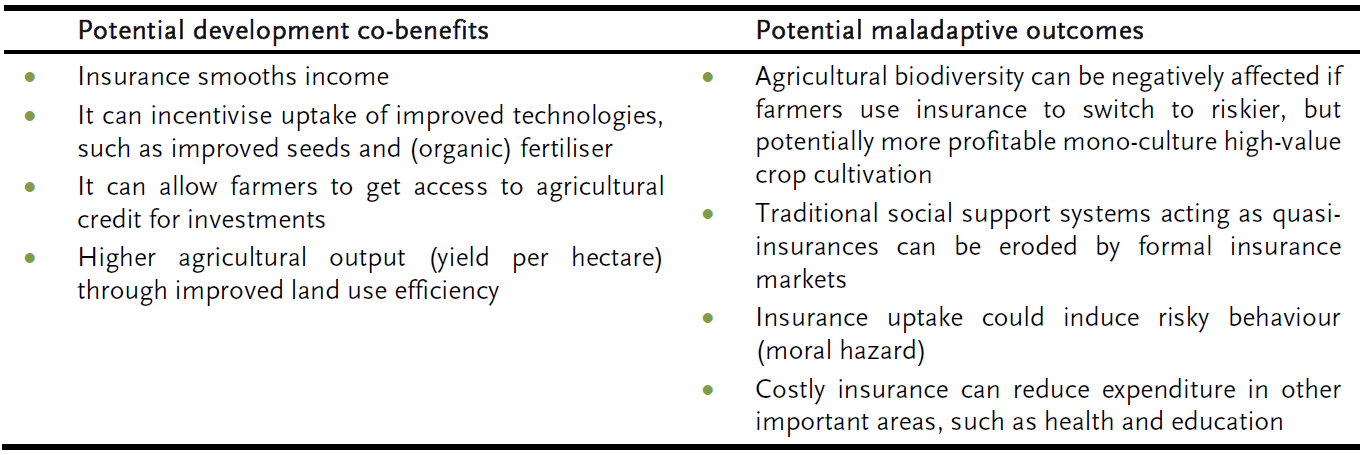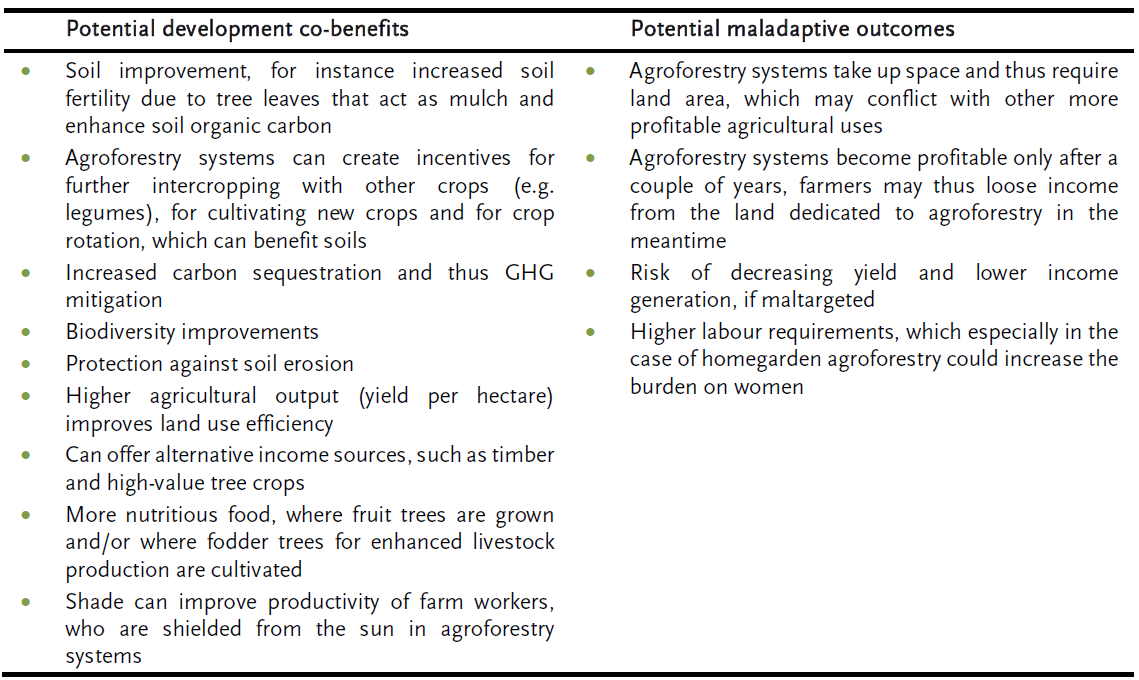
The AGRICA project is implemented by the Potsdam Institute for Climate Impact Research (PIK) in cooperation with the Deutsche Gesellschaft für Internationale Zusammenarbeit (GIZ) GmbH on behalf of the German Federal Ministry for Economic Cooperation and Development (BMZ).
Context and objective
While most countries recognise the importance of adaptation to climate change, there is limited access to reliable information on climate impacts and risks which should inform the selection of adaptation strategies. This is also true for the operationalisation of adaptation goals which are defined in Nationally Determined Contributions (NDCs) and National Adaptation Plans (NAPs): How to translate adaptation goals into concrete actions? Hence, there is a need for science-based adaptation planning which requires sound climate risk analyses and assessment of potential adaptation strategies. To address this issue, the AGRICA project provides comprehensive climate risk analyses for the agricultural sector in selected countries in sub-Saharan Africa. The findings are meant to inform national and sub-national adaptation planning including NDC and NAP development and review processes but will also provide useful information and evidence to decision makers at other planning and implementation levels.
Publication formats
AGRICA currently focuses on the development of two publication formats: in-depth climate risk analyses and shorter climate risk profiles. Climate risk analyses are detailed scientific reports accompanied by a summary for policy makers and a methods factsheet, while the climate risk profiles are short briefs including a methods factsheet. The climate risk analyses are intended to inform decision makers from governments, international institutions, civil society, academia and the private sector regarding the risks of climate change impacts and provide guidance in effective adaptation planning at national and sub-national level. The climate risk profiles focus on climate impacts and risks, providing an easy to read snapshot.
Climate risk analyses
Climate risk analyses are in-depth scientific reports which consist of an impact dimension and an action dimension, providing a thorough assessment of different adaptation strategies for the agricultural sector. In the impact dimension, the analyses start out by modelling the full impact chain, including a changing climate, changing water availability and resulting climate impacts on the agricultural sector. The changing climate and weather-related risks are analysed from a historic, current and future perspective, based on different greenhouse gas (GHG) emissions scenarios. Indicators focus on temperature and rainfall including for example air temperature, number of very hot days and nights, average rainfall and days with heavy rainfall. The impact dimension is complemented by a vulnerability analysis which looks at the spatial distribution of exposure, adaptive capacity and sensitivity to climate impacts. In the action dimension, this information is used to identify and analyse suitable adaptation strategies. Adaptation strategies are carefully selected, with assessment criteria including feasibility, cost-effectiveness, biophysical performance and aptitude for local conditions. Climate risk analyses offer an in-depth risk analysis based on the latest scientific data and findings and serve as a solid basis upon which to design policy processes and make concrete adaptation decisions in partner countries.
To support an inclusive research process and to ensure that the results of AGRICA will be useful on the ground, the project puts a special emphasis on a continuous engagement of local stakeholders operating in the partner countries and districts. Stakeholders are engaged through regular consultations, workshops, joint selection of study foci and other forms of active engagement and mutual exchange.
As of now, national-level climate risk analyses have been completed for Burkina Faso, Ethiopia, Ghana and Niger, in addition to a district-level analysis for Ghana’s Upper West Region. All of these analyses can be found in the Downloads section. Further analyses are currently being developed for Cameroon, Uganda and Zambia. While much of climate policy and planning occurs at the national level, the district level is equally important since many decisions regarding climate adaptation are ultimately made by extension officers and farmers.
The different modules of the in-depth climate risk analyses follow a set of core components but can be adapted in a flexible manner depending on the national context and level of analysis.
Climate risk profiles
Climate risk profiles are short, easy to read briefs, providing a condensed overview of present and future climate impacts and climate risks at national level for relevant sectors in partner countries. The profiles thereby focus on evolving trends for future climate conditions under two greenhouse gas (GHG) emissions scenarios, including projected changes in temperature, rainfall, sea level rise, soil moisture and potential evapotranspiration. In addition, the sector-specific risk assessments focus on climate impacts on water resources, agriculture, infrastructure, ecosystems and human health. CRPs offer a sound risk analysis based on the latest scientific data and findings and have great potential for climate mainstreaming into relevant policy processes of partner countries. The profiles are divided into four sections: a summary, an introduction, projected climate trends and sector-specific risk assessments. CRPs are brief (12 pages) and use an easy language to guarantee a high uptake for decision making.
As of now, climate risk profiles have been completed for Burkina Faso, Cameroon, Chad, Côte d’Ivoire, Ethiopia, Ghana, Kenya, Madagascar, Mali, Mauritania, Niger, Senegal, Tanzania, Uganda and Zambia. In addition to the AGRICA project, climate risk profiles have been developed jointly with other projects and organisations, including with UNHCR for the Sahel region or with the GIZ for Pakistan, as well as in collaboration with the Weathering Risk project (Somalia) and the SLICE project by Climate Analytics (Malawi, Nigeria and Philippines).
Why sub-Saharan Africa?
In many developing and least developed countries (LDCs), economic development continues to be largely dependent on the agricultural sector. This is particularly true for sub-Saharan Africa, where agriculture contributes up to 50 % of countries’ GDP and where up to 90 % of the population are employed in the agricultural sector, mostly as smallholder subsistence farmers. These farmers heavily rely on agriculture for food security and livelihoods. However, agricultural production is increasingly threatened by the impacts of climate change: Temperatures are rising, while the amount of rainfall is decreasing. Extreme weather events such as droughts, floods and storms are becoming more frequent in terms of intensity and number, presenting a risk to agricultural production and food security. These climatic changes are accompanied by rapid population growth: Almost anywhere across sub-Saharan Africa, populations are growing at an annual rate of 2.5-3 % so theoretically, more people will have to be fed with less food.
Many countries need better information to address these and other climate-related challenges. The AGRICA project seeks to bridge this information gap and to provide scientific evidence to support the design of adaptation policies and strategies and to take investment decisions based on comprehensive risk assessments.
Project duration
First phase: September 2018 – December 2020
Second phase: January 2021 – December 2023
Contact
For detailed information on the AGRICA project as well as on opportunities for collaboration and participation, please contact:
Dr. Christoph Gornott (Project Lead at PIK)
T +49 (0)331 288 2655
gornott@pik-potsdam.de
P.O. Box 60 12 03
14412 Potsdam



















